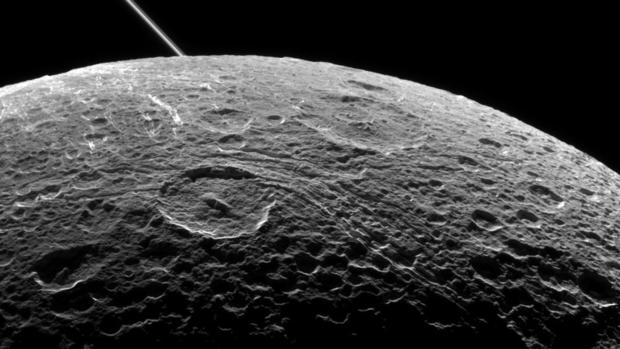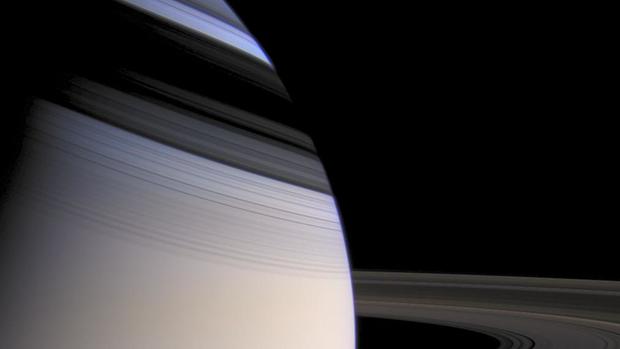NASA's Cassini to whiz past Saturn's moon Dione
Scientists are getting one of their best looks at Saturn's moon Dione, when NASA's Cassini spacecraft flies past this icy satellite on Monday.
Cassini was expected to come within 295 miles (474 kilometers) of Dione's surface, with its closest approach at around 2:33 p.m. Eastern Standard Time. Images will follow in the coming days.
The flyby should be a boon to scientists, who are hoping gravity-science data will improve their knowledge of the moon's internal structure and allow comparisons to Saturn's other moons. Cassini has performed this sort of gravity science investigation with only a handful of Saturn's 62 known moons.
Cassini's cameras and spectrometers will also get a high-resolution peek at Dione's north pole at a resolution of only a few feet. In addition, Cassini's Composite Infrared Spectrometer instrument will map areas on the icy moon that have unusual thermal anomalies - those regions are especially good at trapping heat. The mission's Cosmic Dust Analyzer will search for dust particles emitted from Dione.
Scientists also have been eager to find out if Dione has geologic activity, like Saturn's geyser-spouting moon Enceladus, but at a much lower level.
"Dione has been an enigma, giving hints of active geologic processes, including a transient atmosphere and evidence of ice volcanoes. But we've never found the smoking gun. The fifth flyby of Dione will be our last chance," said Bonnie Buratti, a Cassini science team member at NASA's Jet Propulsion Laboratory in Pasadena, California.
This isn't the first time Cassini has gotten close to Dione.
Cassini's closest-ever flyby of Dione was in Dec. 2011, at a distance of 60 miles (100 kilometers). Those previous close Cassini flybys yielded high-resolution views of the bright, wispy terrain on Dione first seen during the Voyager mission. Cassini's sharp views revealed the bright features to be a system of braided canyons with bright walls.
Cassini has been orbiting Saturn since 2004. After a series of close moon flybys in late 2015, the spacecraft will depart Saturn's equatorial plane - where moon flybys occur most frequently - to begin a year-long setup of the mission's daring final year. That will feature a tricky maneuver, in which it will repeatedly dive through the space between Saturn and its rings.
"This will be our last chance to see Dione up close for many years to come," said Scott Edgington, Cassini mission deputy project scientist at JPL. "Cassini has provided insights into this icy moon's mysteries, along with a rich data set and a host of new questions for scientists to ponder."

